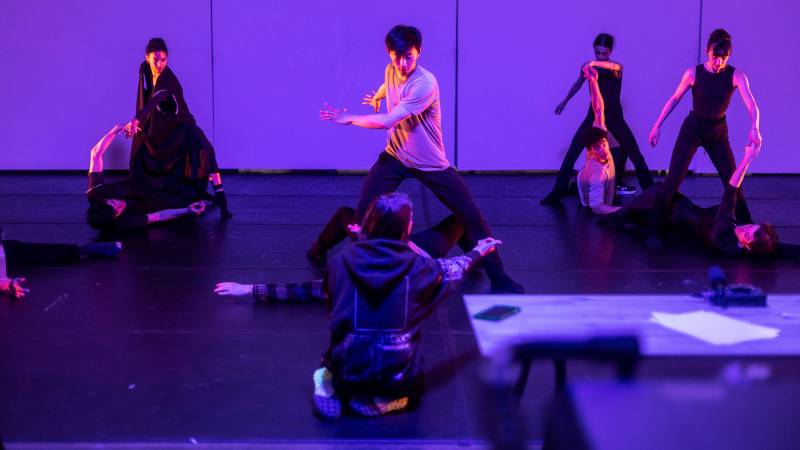When San Francisco Ballet’s new Artistic Director Tamara Rojo first approached Aszure Barton about revisiting the myths of Prometheus and Pandora, the choreographer wasn’t exactly sold.
“I had to really sit with the idea for a while, because I did not like how Pandora had been represented in the past,” Barton remembers.
Then she listened to a podcast from Natalie Haynes, in which the writer, classicist and comedian uncovers a story corrupted by “shaky translations and biased etymologies.” As her view shifted, Barton got excited to work with composer Sam Shepherd (Floating Points) on Rojo’s first commission as the artistic director of San Francisco Ballet.
The resulting production, Mere Mortals, is a bold departure — stylistically, musically and visually — from the era of previous artistic director Helgi Tómasson, who occupied the role for 37 years. SF Ballet’s first full-length commission from a female choreographer, it makes its world premiere on Jan. 26, with Shepherd performing live on the Buchla (a synthesizer created in the Bay Area in 1963) alongside the San Francisco Ballet Orchestra.

It was Shepherd who brought the Greek myth to the table. “I was looking for a story,” he says, specifically a narrative structure that could support an hour’s worth of music. This one has plenty of arcs for sonic exploration: After Prometheus defied the gods and brought fire to man, they created Pandora, the first human woman, in retaliation. Sent to disrupt the world of men, she brought with her a jar — a gift from Zeus — that he warned her never to open. Curiosity won out, and she (or possibly Epithemeus, Prometheus’ brother) opened the jar, releasing evil into the world. All that remained trapped inside was hope, which Shepherd highlights in his composition as “a bit of birdsong” in the form of a violin solo.





